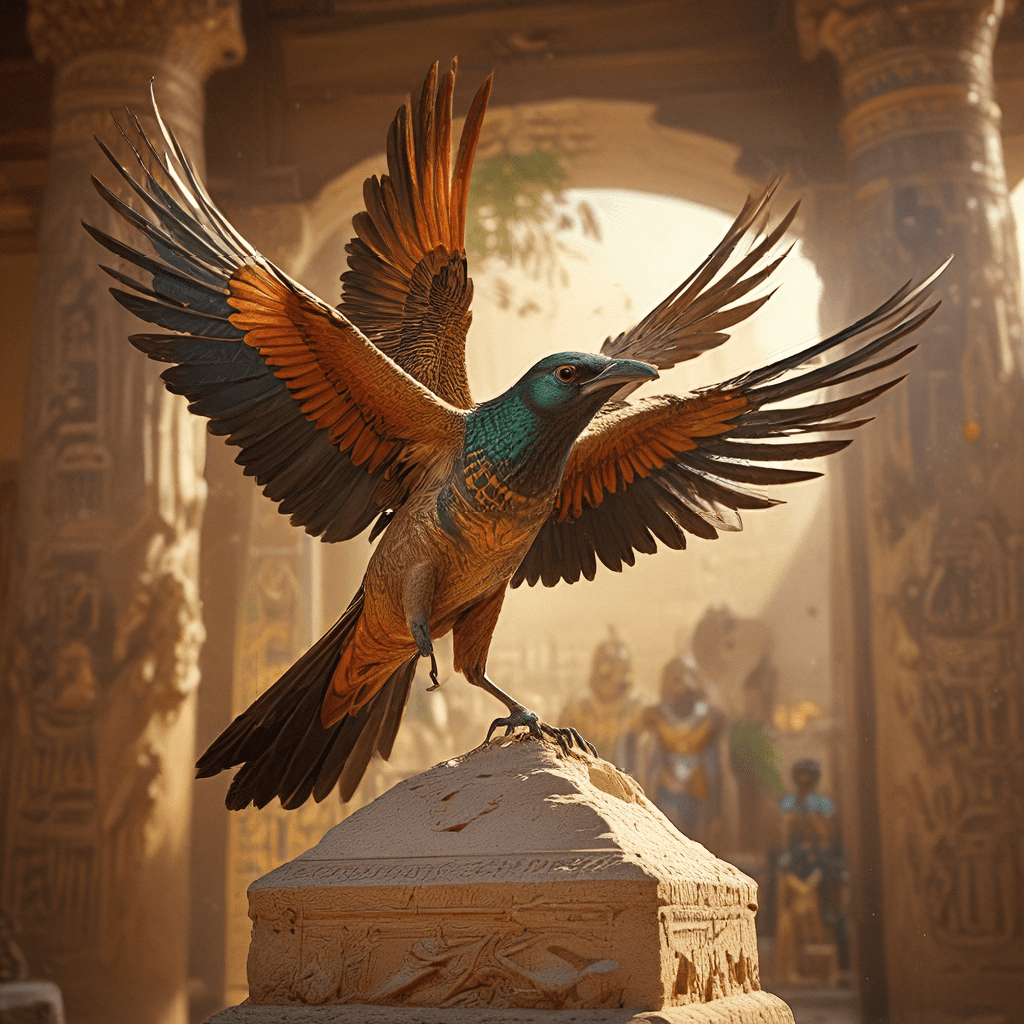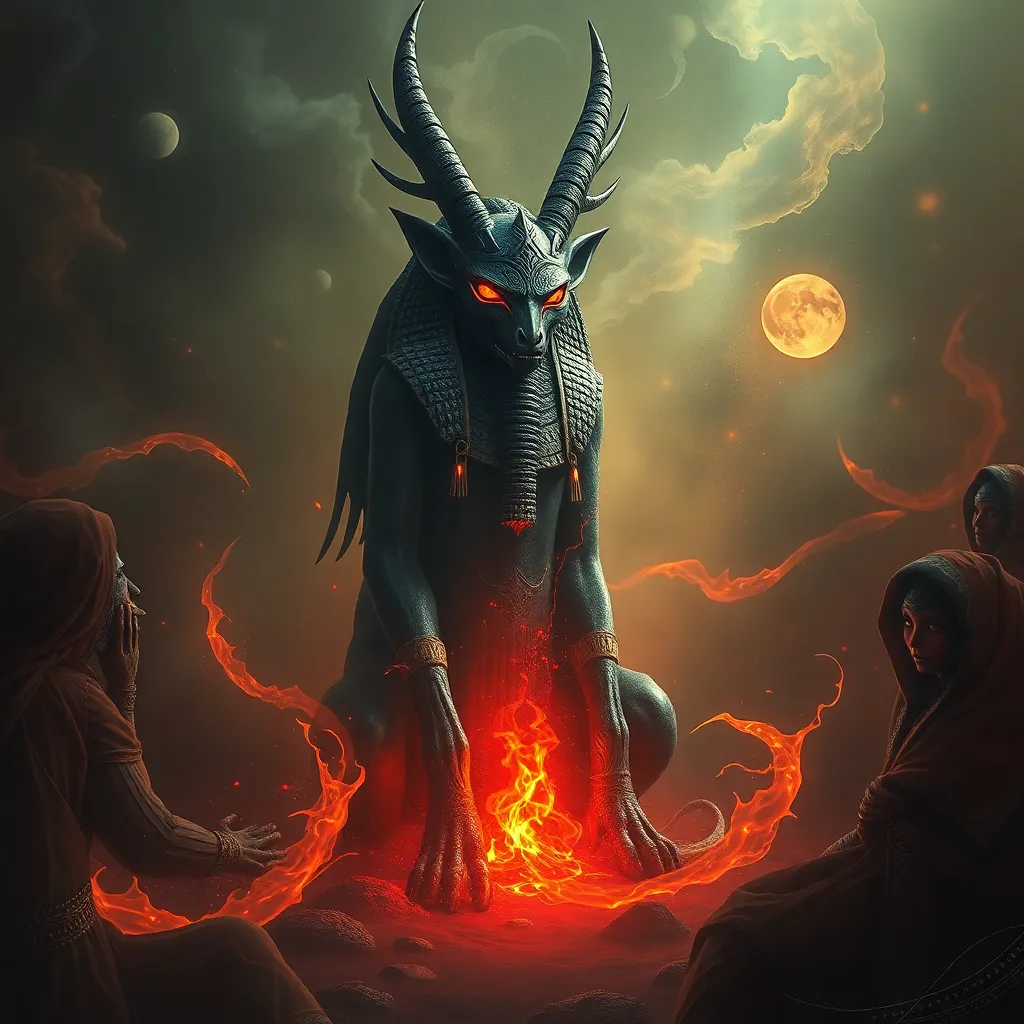The Phoenix in Ancient Egyptian Mythology
The phoenix, a mythical bird known for its ability to rise from its own ashes, holds a significant place in ancient Egyptian mythology. While not as widely recognized as other Egyptian deities, the phoenix, also known as the **Benben bird** or the **sunbird**, played a vital role in their beliefs about life, death, and the cyclical nature of existence. The phoenix was a symbol of rebirth, renewal, and the eternal cycle of the sun, all crucial elements in Egyptian cosmology.
The phoenix’s symbolic significance stems from its connection to the **Benben stone**, a sacred object thought to have emerged from the primordial waters at the beginning of creation. The Benben stone was often associated with the **sun god Ra**, and as such, the phoenix was seen as a manifestation of the sun’s power and its ability to rise again every morning. This association with Ra also linked the phoenix with the **life force**, ensuring that life would continue to flourish despite the cycle of death and rebirth.
The Benben Stone: A Sacred Symbol of Creation
In ancient Egyptian mythology, the Benben stone was a symbolic representation of the primordial mound that emerged from the primeval waters at the beginning of creation. It is believed to have been a sacred object that was worshipped in ancient Egyptian temples. The Benben stone was often depicted as a cone-shaped pyramid, symbolizing the rising sun and the creation of the world.
The Benben stone was said to have been created by the **god Atum**, who emerged from the primordial waters and created the world by uttering his own name. The Benben stone was considered to be the center of the world and the source of life and fertility. The stone was also associated with the sun god Ra, who was believed to travel across the sky in his solar boat, rising from the eastern horizon each morning, symbolizing rebirth and renewal. This association with Ra, the sun god, further cemented the Benben stone’s connection to the sunbird, the phoenix.
The Myth of the Sunbird: A Story of Rebirth and Renewal
The myth of the sunbird is a tale of rebirth and renewal, paralleling the cyclical nature of the sun. This **mythical bird**, often depicted as a **golden eagle** or a **falcon**, would live for a very long time before burning itself on a pyre. From the ashes of the old bird, a new phoenix would be born, symbolizing the eternal cycle of life, death, and rebirth.
The myth is often associated directly with the **Benben stone**, which itself is often believed to have been a **sacred obelisk**, an obelisk being a tall, four-sided, tapering monument that was often placed in front of temples and other important sites. This association symbolizes the phoenix’s connection to the **creation process** and the **power of the sun**. It also reflects the Egyptians’ belief that the sun god Ra was reborn each morning after traveling through the underworld at night. This constant cycle of death and rebirth was often reflected in the phoenix myth, offering hope and assurance of continued life and prosperity.
The Phoenix as a Symbol of the Sun God Ra
The phoenix, as a mythical bird, was closely linked with the sun god Ra, also known as **Re**. This association is evident in both the phoenix’s symbolic attributes and the myths surrounding it. Its connection to the Benben stone, which is itself associated with Ra, and the phoenix’s ability to rise from the ashes, mirroring the sun’s daily rebirth, all point to the connection between the sunbird and Ra.
The phoenix, as a symbol of Ra, also represented **fertility**, **life**, and **renewal**, further solidifying its importance in Egyptian mythology. The Egyptians believed that life renewed itself with the rising sun, an idea reflected in the phoenix’s ability to rise from ashes.
The Connection between the Benben Stone and the Phoenix
The Benben stone and the phoenix are inextricably linked in Egyptian mythology.
The Benben stone, as the **symbol of creation**, acted as the foundation of the world. It represents the **origin of life**, and is often associated with the **sun god Ra**, the source of light and life.
The phoenix, as a **symbol of rebirth and renewal**, was often depicted as emerging from the Benben stone, symbolizing the power of creation and the cyclical nature of existence.
The connection between the Benben stone and the phoenix is further solidified through their shared connection to the sun god Ra. The phoenix, as a manifestation of the sun’s power, symbolizes the daily rebirth of the sun, which is also represented by the Benben stone’s connection to the rising sun. This intricate connection underscores the phoenix’s importance in Egyptian mythology as a symbol of life, rebirth, and the eternal cycle of creation and renewal.
The Phoenix in Egyptian Art and Iconography
The phoenix, in its various forms, is a recurring motif in ancient Egyptian art and iconography. This mythical bird was often depicted in paintings, sculptures, and hieroglyphs, signifying its importance in Egyptian beliefs. While not as prominent as other Egyptian deities, the phoenix’s presence is undeniable, representing its connection to life, death, and the cyclical nature of existence.
Depictions of the phoenix often showcased its association with the Benben stone, symbolizing its connection to creation and the power of the sun god Ra. In some representations, the phoenix was depicted emerging from the Benben stone, emphasizing its role in the cycle of rebirth. This visual representation further solidified the relationship between the phoenix, the Benben stone, and the sun god Ra.
The phoenix’s symbolic attributes were also reflected in its depiction. Its wings, often spread in a posture of flight, symbolized the sun’s journey across the sky. Its golden plumage, often depicted in vibrant colors, represented the sun’s brilliance and its life-giving power. The phoenix’s fiery nature was also often highlighted, further emphasizing its association with the sun and its ability to rise again from ashes.
Theories on the Origin of the Phoenix Myth
The origin of the phoenix myth, like many ancient myths, is shrouded in mystery. However, several theories offer insights into its possible roots and inspirations.
One theory suggests that the phoenix myth originated from observations of the Egyptian vulture. This bird was known for its habit of cleaning itself thoroughly and its ability to regenerate lost feathers. These characteristics might have contributed to the myth of the phoenix, symbolizing its renewal and rebirth.
Another theory posits that the phoenix myth was influenced by the cyclical nature of the sun. The Egyptians observed the sun’s daily rise and fall, and this cyclical pattern might have inspired the myth of the phoenix, representing its ability to rise from the ashes and start anew.
The association of the phoenix with the Benben stone might also suggest a connection to the Obelisk, a tall tapering monument that symbolized the rising sun. The Benben stone, often depicted as a cone-shaped pyramid, might have been inspired by the Obelisk, further linking the phoenix to the sun and its celestial journey.
The Influence of the Phoenix Myth on Other Cultures
The phoenix myth, originally rooted in ancient Egyptian beliefs, has had a profound impact on other cultures around the world. Its symbolism of rebirth and renewal resonated across different civilizations, leaving an enduring mark on their mythologies and art.
The Greeks adopted the phoenix myth, incorporating it into their own stories and legends. They associated the phoenix with the god Helios, the sun god, further reinforcing its connection to the sun and its cyclical nature. The Greek poet Ovid, in his famous work “Metamorphoses,” described the phoenix in detail, solidifying its place in Western literature and mythology.
The Romans also embraced the phoenix myth, associating it with their own beliefs about resurrection and immortality. The phoenix became a symbol of hope and resilience, representing the enduring spirit of the Roman Empire.
The phoenix myth has also influenced the arts, literature, and philosophy of various cultures, further showcasing its enduring appeal and its universal symbolism of rebirth, renewal, and the cyclical nature of existence.
The Phoenix as a Symbol of Hope and Immortality
Beyond its connection to the sun god Ra and the cyclical nature of life, the phoenix also holds deeper meaning as a symbol of hope and immortality. Its ability to rise from the ashes represents the potential for renewal and transformation, inspiring people to overcome adversity and embrace new beginnings.
The phoenix’s fiery nature, often associated with the sun’s heat and energy, signifies the power of life and the potential for rebirth. It symbolizes the ability to rise above challenges and emerge stronger, offering a message of hope and resilience in the face of hardship.
The phoenix’s immortality, its ability to rise from its own ashes, symbolizes the enduring nature of life and the potential for eternal existence. It offers a comforting belief in the cyclical nature of life and death, assuring people that life continues even after passing.
The Legacy of the Phoenix in Ancient Egypt
The phoenix, as a symbol of rebirth, renewal, and the eternal cycle of the sun, holds a significant place in ancient Egyptian mythology. It represents not only the sun god Ra’s power and influence but also the Egyptians’ belief in the cyclical nature of life, death, and rebirth.
The phoenix myth, linked to the Benben stone and its association with creation and the sun god Ra, provides insight into the Egyptians’ worldview. Their understanding of the universe as a cyclical system with a constant interplay of life, death, and rebirth is embodied in the phoenix’s mythical journey.
The phoenix’s legacy continues to inspire and resonate with people across cultures and time. Its symbolism of hope, resilience, and immortality serves as a powerful reminder of the enduring nature of life and the potential for renewal, offering a message of hope and reassurance in the face of life’s challenges.
FAQ
**Q: What is the connection between the phoenix and the Benben stone?**
**A:** The Benben stone, a sacred object representing the primordial mound that emerged from the primeval waters, is often associated with the phoenix. The phoenix is often depicted emerging from the Benben stone, symbolizing its connection to creation and the power of the sun god Ra.
**Q: What is the significance of the phoenix’s ability to rise from the ashes?**
**A:** The phoenix’s ability to rise from the ashes symbolizes rebirth and renewal, reflecting the Egyptians’ belief in the cyclical nature of life, death, and rebirth.
**Q: How did the phoenix myth influence other cultures?**
**A:** The phoenix myth resonated with other cultures, inspiring their own stories and legends. The Greeks, Romans, and other civilizations adopted the phoenix myth, incorporating it into their own beliefs about resurrection, immortality, and the cyclical nature of life.
**Q: What is the phoenix’s symbolic significance today?**
**A:** The phoenix continues to hold significant symbolic meaning today, representing hope, resilience, and the potential for renewal and transformation. It serves as a universal symbol of life’s enduring power and the potential for overcoming adversity.



